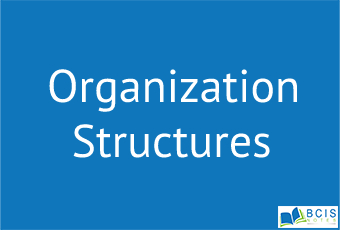
Organization structure
Organization structure refers to the way individuals and groups are arranged with respect to the tasks they perform. It is the process of coordinating these structural elements in the most effective manner.
Foundations of organization structure:
Components of structure are as follows:
- Work specification
- Departmentalization (Group the activities)
- Chain of command
- Span of control
- Centralization and Decentralization
- Formalization
Types of Organization design:
- Common organizational design: Simple structure, the Bureaucratic structure, Matrix structure
- Modern organizational design: Team structure, The Virtual(Network) Organization, Boundary-less Organization
Job design:
Job design is the process of structuring work and designating the specific activities at individual or group levels. It is the function of specifying the work activities of an individual or group in an organizational setting. Job Design is the process of deciding on the content of a job in terms of its duties and responsibilities; methods techniques, systems and procedures and the relationships that should exist between the job holder and superiors, subordinates and colleagues.
The objective of job design is to develop jobs that meet the requirements of the organization and its technology and that satisfy the jobholder’s personal and individual requirements
Objectives of Job design:
- To Meet the organizational requirements such as higher productivity, operational efficiency, quality of product/service etc.
- To satisfy the needs of the individual employees like interests, challenges, achievement or accomplishment, etc.
- Integrate the needs of the individual with the organizational requirements.
Management techniques of Job design:
- Job rotation
- Job enlargement
- Job enrichment
- Flextime
- Telecommuting
- Job sharing
- Condensed work week
- Work form home
Human factors in organizing (Organization design and employee behavior):
People are different in nature; Not every one prefers the freedom and flexibility of organic structures and vice-versa. while designing organization structures and vice-versa. While designing organization structure managers have to consider individual differences in their mind. There is a consensus among behavioral experts and working managers that an organization’s structure has significant effects on its employees. How each of the design affects employed behavior has been discussed separately while going through those designs accordingly.
Organizational Culture:
Organizational culture is the set of important assumptions that members of an organization share in common. Every organization has its own culture. An organization’s culture is similar to an individuals personality-an intangible theme that provides meaning, direction, and the basis for action.
- It is the basic pattern of shared assumptions, values and beliefs considered to be correct way of thinking about and acting on problems and opportunities facing the organization.
- A member of an organization can simply be aware of the organization’s beliefs and values without sharing them in a personally significant way.
- It is philosophy that guides an organizational policies towards employees and customers.
Importance and characteristics of organizational culture:
| Characteristics: | Importance: |
|---|---|
|
No need to communicate in matters for which shared assumptions already exist
|
Factors shaping Organizational Culture
- Nature of the business
- Characteristics of people within the organization
- Socialization of the organization
- Adherence of important values
- Organizational ethics
- Employment relationship
- Organizational structure
You may also like Leadership || Motivation and Leadership || Organizational Behavior

Leave a Reply